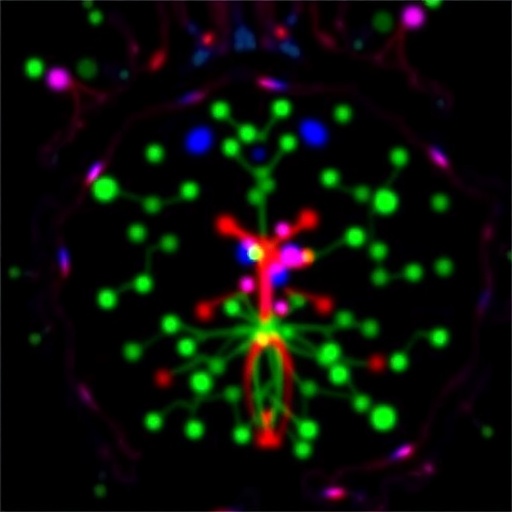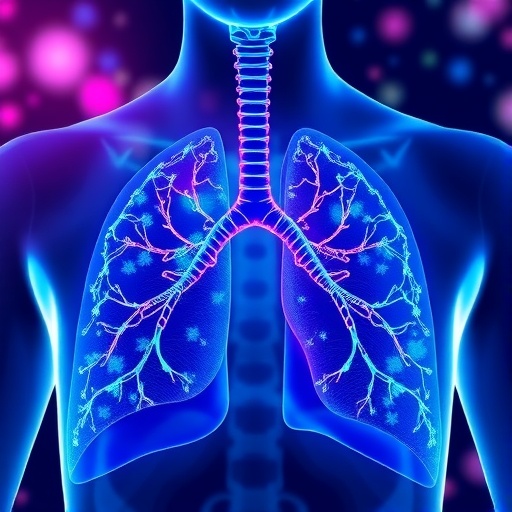In a groundbreaking study published in Nature Communications in 2025, researchers led by Aguado-Alvaro, Garitano, Esser-Skala, and colleagues have unveiled critical insights into the epigenetic regulators driving fibrotic transformation in cardiac fibroblasts. This pioneering work leverages the power of both bulk and single-cell CRISPR screening technologies, offering an unprecedented molecular dissection of cardiac fibrosis—a pathological hallmark of numerous chronic heart diseases and a major contributor to heart failure worldwide.
Cardiac fibrosis results from the excessive deposition of extracellular matrix components driven mainly by activated cardiac fibroblasts. These fibroblasts, when exposed to different stimuli such as injury or stress, undergo phenotypic changes that fuel fibrotic scarring, ultimately compromising cardiac function. Despite the clinical significance of cardiac fibrosis, therapeutic options remain limited, largely due to an incomplete understanding of the regulators orchestrating fibroblast activation and fibrogenesis.
The study’s innovative approach utilized large-scale CRISPR-Cas9 gene-editing screens, applied to bulk populations and individuals at the single-cell resolution, to systematically identify epigenetic factors that govern fibrotic transformation. CRISPR screening technology allows precise targeting and disruption of genes across the genome, enabling the mapping of gene function in complex biological processes. By integrating bulk and single-cell analyses, the team could capture both broad regulatory trends and cellular heterogeneity within fibroblast populations during fibrosis.
One of the key technical challenges in studying cardiac fibroblasts is their phenotypic diversity. The authors addressed this by employing single-cell CRISPR screens that combine gene perturbation with single-cell RNA sequencing (scRNA-seq), a method that enables simultaneous readout of genetic modifications and transcriptional states. This approach provided high-resolution insights into how epigenetic factors influence the cellular trajectories leading to fibrosis. The data revealed subsets of fibroblasts with distinct fibrotic programs and how specific epigenetic regulators bias cells toward pathogenic states.
Central to the study were chromatin modifiers—proteins that alter the accessibility and structure of chromatin, thereby controlling gene expression epigenetically without changing the underlying DNA sequence. The screens identified several epigenetic regulators previously unassociated with cardiac fibrosis, highlighting novel targets. Among these, certain histone methyltransferases and demethylases emerged as pivotal in modulating fibroblast activation and extracellular matrix production, suggesting that their pharmacological inhibition could ameliorate fibrotic remodeling.
Beyond discovery, the research team validated these targets in vitro and in vivo. Functional assays demonstrated that knocking out candidate epigenetic regulators suppressed fibroblast differentiation into myofibroblasts and reduced collagen synthesis, two critical features of fibrotic pathology. In animal models of myocardial infarction, inhibition of these regulators corresponded with decreased ventricular fibrosis and improved cardiac function, underscoring therapeutic potential.
This study pioneers a significant paradigm shift in understanding cardiac fibrosis by framing it not only as a cellular reprogramming problem but also as an epigenetic dysregulation challenge. The insights gained emphasize the dynamic and reversible nature of epigenetic modifications, paving the way for next-generation therapeutics that could reset fibroblast states rather than merely blocking fibrotic signals downstream.
Moreover, the integrated use of bulk and single-cell CRISPR screens represents a powerful strategy generally applicable to other fibrotic diseases, such as liver and lung fibrosis, where similar epigenetic mechanisms may operate. The ability to resolve cell type-specific regulators within complex tissues is crucial for developing precise, personalized interventions against fibrosis.
The study also highlights the technological advances in CRISPR screening methodology. Combining CRISPR-mediated gene knockout with single-cell transcriptomic profiling dramatically enhances the resolution and interpretability of functional genomics data. This dual approach surmounts the limitations of bulk analyses that average signals across heterogeneous populations, missing subtle yet critical effects in rare cell subsets.
Beyond epigenetic regulators, the dataset generated serves as a rich resource to explore additional molecular pathways intersecting with fibroblast biology. The authors have made their data publicly available, anticipating that the scientific community will leverage this trove to uncover combinatorial treatments targeting fibrosis through multiple synergistic mechanisms.
From a clinical translation standpoint, the identification of epigenetic players opens exciting possibilities for repurposing small-molecule inhibitors already under investigation in oncology and other fields where epigenetic dysregulation is well documented. Such cross-disciplinary therapy development could accelerate bringing anti-fibrotic drugs to the clinic.
The implications of this research extend beyond heart disease and fibrosis. By illuminating how epigenetic regulators influence cellular plasticity, the work informs broader questions about tissue repair, regeneration, and pathological remodeling. Cardiac fibroblasts serve as a model system to understand how epigenetic landscapes shape cell fate decisions in health and disease.
Importantly, the study sets a new benchmark for integrating multi-omic screening technologies with functional validation and translational relevance. As CRISPR screens evolve toward higher throughput and precision, similar strategies can be anticipated to revolutionize research across many complex disorders characterized by cellular heterogeneity and epigenetic alterations.
In conclusion, the work of Aguado-Alvaro and colleagues represents a seminal advance in cardiac fibrosis research. By systematically decoding the epigenetic architecture of fibroblast transformation through state-of-the-art CRISPR screening at single-cell resolution, they provide a robust roadmap for developing targeted epigenetic therapies. This breakthrough promises to reshape the therapeutic landscape for cardiac fibrosis and, more broadly, for diseases driven by pathological epigenetic rewiring.
Subject of Research: Epigenetic regulation of fibrotic transformation in cardiac fibroblasts.
Article Title: Identification of epigenetic regulators of fibrotic transformation in cardiac fibroblasts through bulk and single-cell CRISPR screens.
Article References: Aguado-Alvaro, L.P., Garitano, N., Esser-Skala, W. et al. Identification of epigenetic regulators of fibrotic transformation in cardiac fibroblasts through bulk and single-cell CRISPR screens. Nat Commun (2025). https://doi.org/10.1038/s41467-025-66597-9
Image Credits: AI Generated
Tags: cardiac fibroblast activation mechanismschronic heart disease and fibrosisCRISPR screening technology in heart researchepigenetic regulation of cardiac fibrosisextracellular matrix deposition in heart diseasefibroblast activation and cardiac functiongene-editing in cardiac researchmolecular dissection of heart failurephenotypic changes in cardiac fibroblastssingle-cell analysis of fibrogenesistherapeutic targets for cardiac fibrosisunderstanding heart disease through epigenetics





